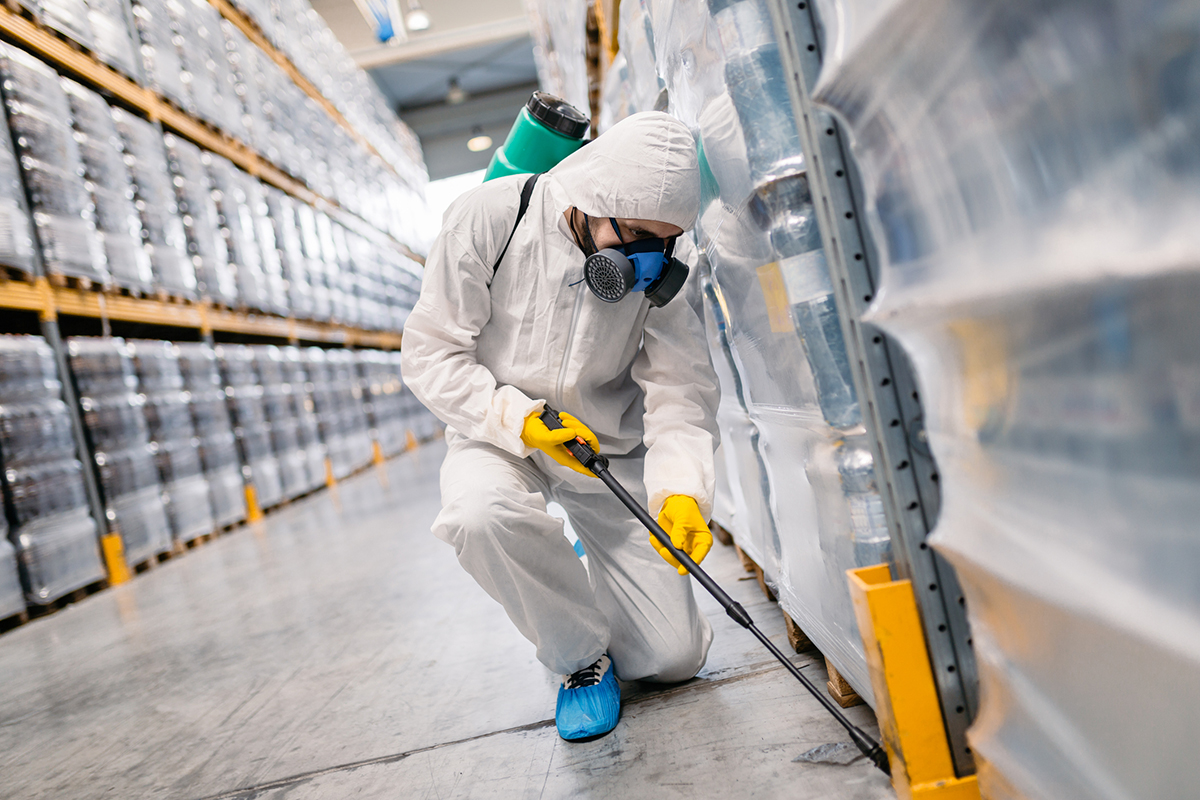Relied On A1 Exterminator Charlotte NC - Comprehensive Pest Solutions
Relied On A1 Exterminator Charlotte NC - Comprehensive Pest Solutions
Blog Article
Bed Insect Therapy Breakdown: Contrasting Chemical Vs. Non-Chemical Solutions
In the world of insect control, especially when dealing with the consistent concern of bed bugs, the option in between chemical and non-chemical therapy solutions can be an essential one. Both strategies offer distinct benefits and downsides, influencing elements such as efficiency, safety considerations, and general price. By analyzing the nuanced details of each method, a clearer understanding of which course to go after in attending to a bed pest invasion can be acquired.
Effectiveness of Chemical Therapies
Chemical therapies for bed bug invasions have actually been widely acknowledged for their potent and fast effectiveness in getting rid of these pests. When thinking about the efficiency of chemical therapies, it is essential to comprehend that they can give a quick and comprehensive solution to a bed bug problem. Expert pest control specialists commonly rely upon pesticides to target bed bugs at numerous stages of their life cycle, consisting of grownups, fairies, and eggs. These chemicals usually function by interrupting the bed insects' nerve system, leading to paralysis and ultimate fatality.
Moreover, chemical treatments have the benefit of using residual results, implying that they can proceed to remove bed insects even after the first application. This recurring action is particularly useful in combating any prospective re-infestations. Additionally, the quick activity of chemical therapies can bring alleviation to individuals facing serious bed pest invasions, enabling them to regain control of their space rapidly.
Safety Issues With Chemical Solutions
One critical facet that calls for mindful consideration when using chemical options for bed insect therapy is guaranteeing the security of passengers and the atmosphere. While chemical treatments can be efficient in getting rid of bed insects, they might pose risks otherwise dealt with properly. Among the main security interest in chemical solutions is the possible damage they can trigger to human health and wellness. Exposure to certain chemicals used in bed bug treatments can bring about respiratory problems, skin irritation, or other damaging reactions, especially in individuals with pre-existing problems or level of sensitivities. Furthermore, inappropriate application or dosage of chemical pesticides can result in hazardous residues remaining in the treated location, posing lasting health threats to residents.
Moreover, the ecological effect of chemical options is one more substantial factor to consider. Some pesticides utilized in bed bug treatments might be hazardous to advantageous bugs, wild animals, and ecosystems if they seep into the soil or water supply. It is necessary to use chemical treatments carefully, complying with safety and security standards, and thinking about less hazardous choices to alleviate these threats and guarantee the reliable and risk-free monitoring of bed pest infestations.
Benefits of Non-Chemical Techniques
Taking into consideration the prospective safety and security concerns and environmental effect connected with chemical remedies for bed pest treatment, exploring non-chemical approaches presents an appealing option with a number of unique advantages. Non-chemical therapies are eco pleasant, as they do not add to air or water air pollution, making them a lasting selection for parasite control.
Furthermore, non-chemical solutions can be reliable in targeting bed insects, including hard-to-reach locations where chemical therapies might not pass through click here now - A1 pest control charlotte nc bed bugs. Approaches such as warm treatment, vacuuming, heavy steam cleaning, and cushion encasements offer complete obliteration without the use of harmful chemicals.
Limitations of Non-Chemical Treatments

Furthermore, non-chemical therapies frequently need several applications to accomplish successful removal. This can be lengthy and may not here are the findings constantly ensure full elimination of all bed bugs and their eggs, particularly in concealed or hard-to-reach areas.
In addition, the success of non-chemical therapies greatly relies upon appropriate implementation and thoroughness, which can be challenging for people without specialist experience. Poor application of non-chemical approaches might result in incomplete obliteration, leading to consistent problems and the need for extra treatments.
Therefore, while non-chemical treatments have their advantages, it is vital to recognize these limitations and consider them when figuring out the most efficient method for managing bed pest invasions.
Cost Contrast: Chemical Vs. Non-Chemical Options
Provided the constraints linked with non-chemical treatments, an important aspect to examine in the context of bed insect management is the expense comparison between chemical and non-chemical options. In comparison, non-chemical treatments like warm therapy or steam can be extra costly, with costs varying from $1,000 to $6,000 for an entire home. While the preliminary price of chemical therapies pest eliminators may appear lower, numerous treatments might be required to fully get rid of the invasion, possibly enhancing the total price.
Verdict

Taking into consideration the potential safety and security issues and environmental impact linked with chemical solutions for bed bug treatment, checking out non-chemical techniques presents a promising alternative with a number of unique advantages.Given the limitations associated with non-chemical treatments, a necessary facet to review in the context of bed insect management is the price contrast in between chemical and non-chemical choices. In contrast, non-chemical treatments like heat treatment or heavy steam can be a lot more pricey, with costs ranging from $1,000 to $6,000 for a whole home. While the first price of chemical therapies might appear lower, several treatments may be required to fully eradicate the infestation, potentially increasing the overall price.In verdict, when contrasting chemical and non-chemical bed pest therapy choices, it is crucial to consider efficiency, security, benefits, constraints, and cost.
Report this page